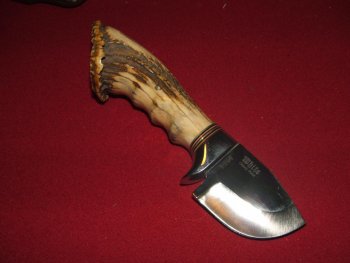sethshaun
Active Member
I have trouble getting out the deeper grindmarks from my plunges.
I like to tell myself that I just need to invest in a 2x72 and it will make plunges and bevels easier. Right now I use a 6" bench grinder, angle grinder, 6x6x36 belt/disc grinder, bandsaw, drillpress, dremel and lots and lots of files and sandpaper.
I know what I want to do to get the grind type that I want but its not always that easy with the tools I have. Or am I wrong? Should I keep using what I have or is it really a lot better with a versatile NWG type grinder?
Thanks, any and all advice appreciated. :bud:
I like to tell myself that I just need to invest in a 2x72 and it will make plunges and bevels easier. Right now I use a 6" bench grinder, angle grinder, 6x6x36 belt/disc grinder, bandsaw, drillpress, dremel and lots and lots of files and sandpaper.
I know what I want to do to get the grind type that I want but its not always that easy with the tools I have. Or am I wrong? Should I keep using what I have or is it really a lot better with a versatile NWG type grinder?
Thanks, any and all advice appreciated. :bud:

